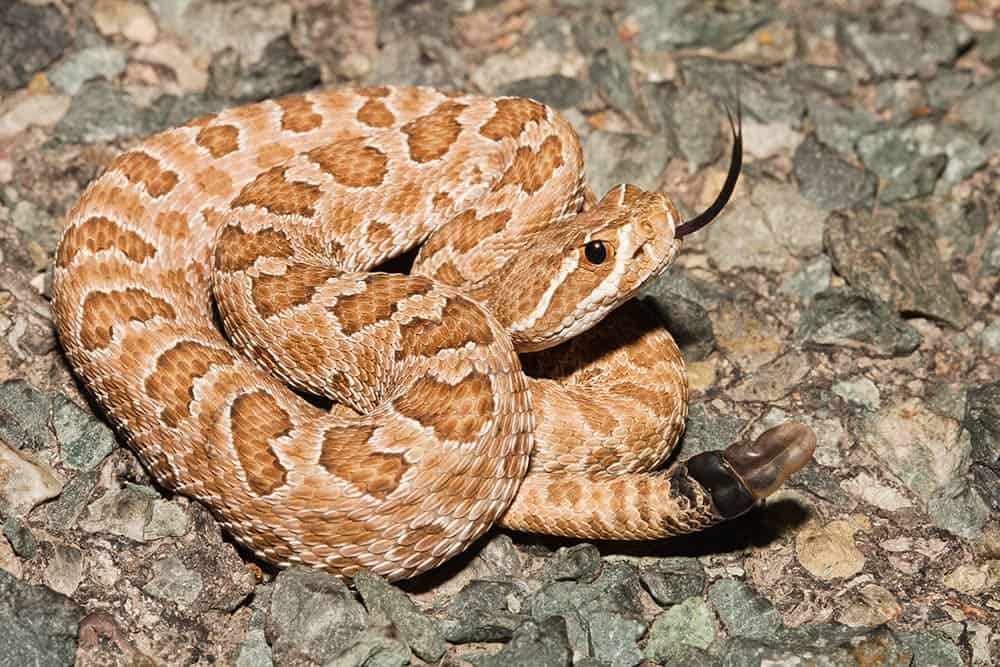Montana is known for its wide-open spaces and gorgeous landmarks, like the Glacier National Park, a vast reserve that extends all the way into Canada. The beauty of the park’s snow-capped peaks, lakes, and various hiking trails makes it a popular getaway for outdoor enthusiasts, with some of the most beautiful vistas in the United States. Of course, if you are planning on hiking anywhere in the Big Sky State, you may be wondering about the local snake population and whether any of them are worth worrying about.
There are 10 snake species native to Montana, and only one — the Prairie Rattlesnake — is venomous and can be found throughout the state. Of these 10, three are Garter snakes, which are commonly kept as pets and not dangerous to humans.
Here are the 10 snake species native to Montana.

The 10 Snakes Found in Montana
The Venomous Snake Found in Montana
1. Prairie Rattlesnake
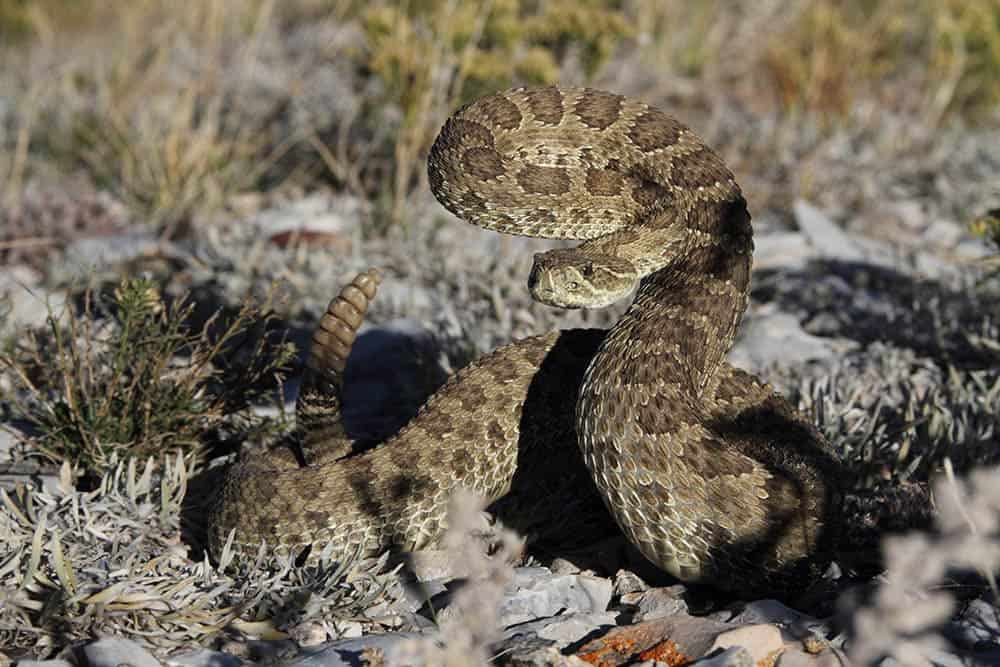
| Species: | Crotalis viridis |
| Longevity: | 16–20 years |
| Good to own as a pet?: | Only for experienced snake owners with lots of space |
| Legal to own?: | In most states |
| Adult size: | 35–45 inches |
| Diet: | Carnivorous |
The Prairie Rattlesnake is found throughout Montana, preferring wooded mountains and prairies. Like all other rattlesnakes, Prairies have small rings on the end of their tails that knock together to make a rattling sound. They have a flat, triangular head with a light-brown body covered in dark, oval patches with narrow white borders and a cream or pale yellow belly.
Like all vipers, they have retractable hollow fangs that they use to inject venom into their prey. They are capable of delivering a lethal bite to humans, although this is rare because they are generally not aggressive and will not attack humans unless provoked.
The 3 Water Snakes in Montana
While there are no “true” water snake species found in Montana, Garter snakes can often be found in and around water. While they do not spend as much time in water as true water snakes, they enjoy being close to bodies of water, and in captivity, they will appreciate a small bowl to soak in.
2. Common Garter Snake
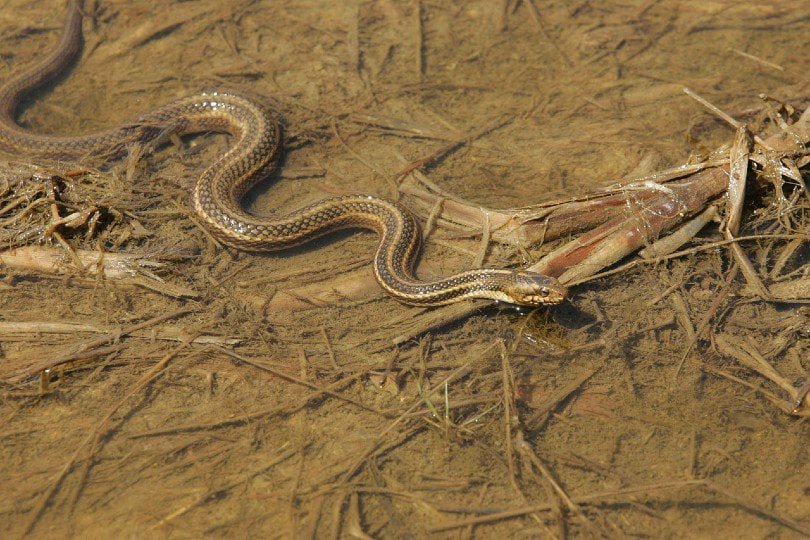
| Species: | Thamnophis sirtalis |
| Longevity: | 4–5 years (up to 10 in captivity) |
| Good to own as a pet?: | Yes |
| Legal to own?: | Yes |
| Adult size: | 23–30 inches |
| Diet: | Carnivorous |
The Common Garter Snake is a popular pet due to their docile temperament and relatively small size. They are among the most wide-ranging of the Garter species and can be found in 48 states throughout the U.S. They can vary widely in color, though are commonly found in black, olive, brown, and grey. Almost all will have the characteristic three yellow stripes running down the length of the body.
Garter snakes are mildly venomous, although they pose no threat to humans. They will rarely bite, unless they are provoked, and it will cause no more than a slightly swollen, irritated area around the wound.
3. Western Terrestrial Garter Snake
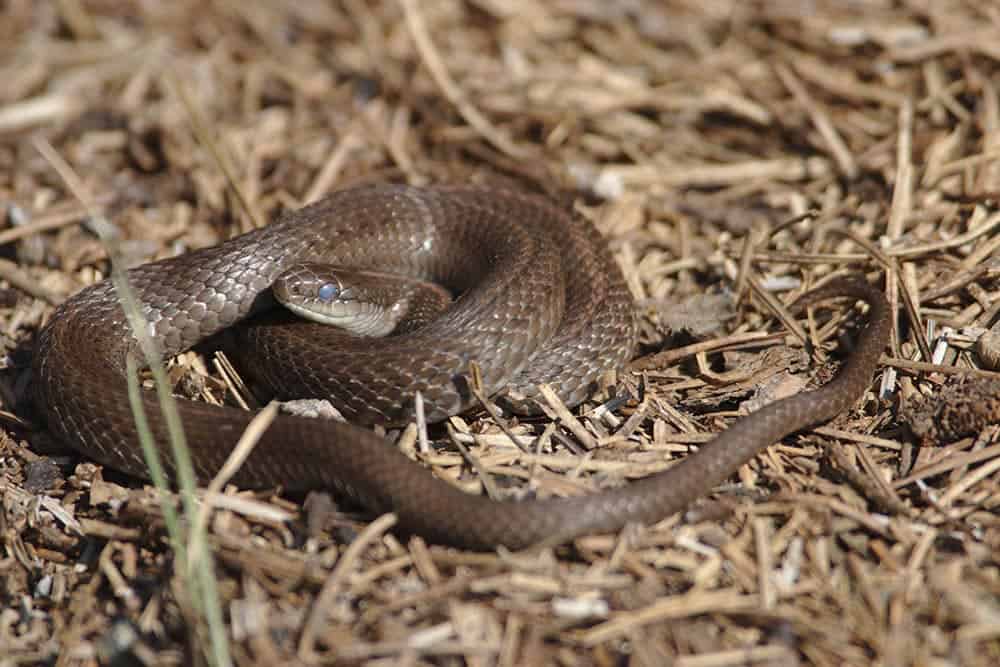
| Species: | Thamnophis elegans |
| Longevity: | 2–3 years (6–12 in captivity) |
| Good to own as a pet?: | Yes |
| Legal to own?: | Yes |
| Adult size: | 30–40 inches |
| Diet: | Carnivorous |
The Western Terrestrial Garter Snake is a Garter snake that is commonly kept as a pet due to their diverse diet and ease of care in captivity. They will eat anything from small mammals and amphibians to birds, slugs, and even other snakes, so they should not be kept together in captivity. Most of these snakes have a large yellow or light orange stripe running down their spine, with two smaller stripes on either side, often with red or black spots between the stripes.
They are one of the most venomous of the Garter genus, although they pose no threat to humans and are not usually aggressive unless threatened.
4. Plains Garter Snake
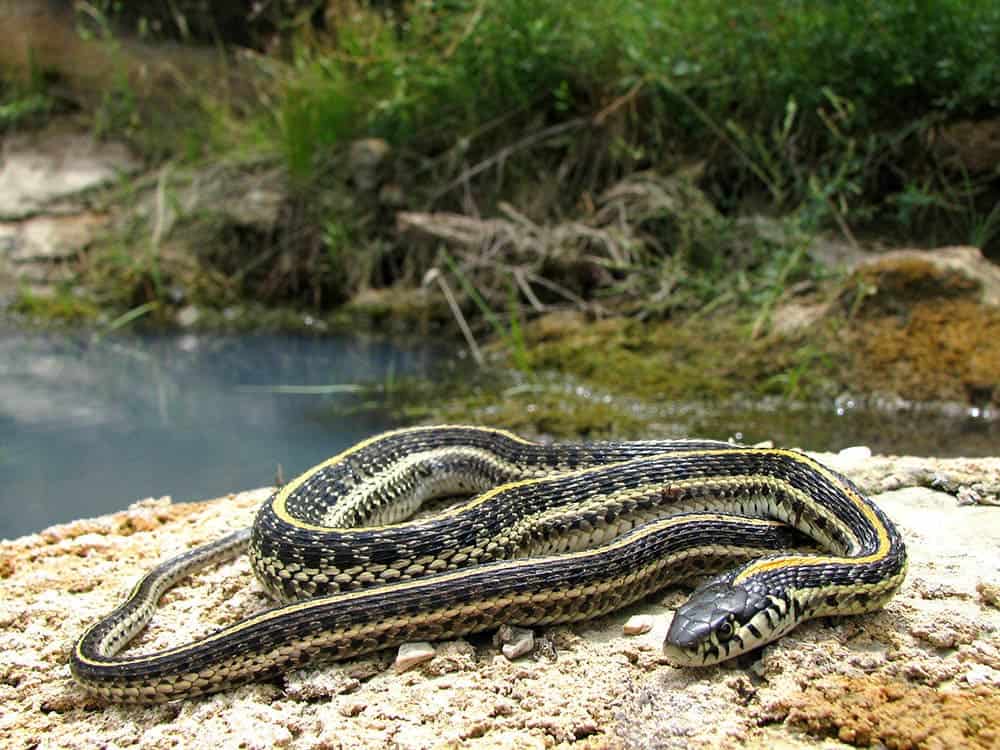
| Species: | Thamnophis radix |
| Longevity: | 5–8 years |
| Good to own as a pet?: | Yes |
| Legal to own?: | Yes |
| Adult size: | 16–28 inches |
| Diet: | Carnivorous |
The Plains Garter is a small, docile, mildly venomous snake, making them a popular pet for beginners. They are typically black or greenish-brown, with the distinctive yellow dorsal stripe found on all Garter snakes, often with two lighter stripes on either side. They are usually found close to streams, ponds, and other small bodies of water, but they can be found in urban areas too. They typically feed on worms, slugs, and small amphibians and may even eat small birds at times.
The 6 Other Snakes Found in Montana
5. Northern Rubber Boa
| Species: | Charina bottae |
| Longevity: | 20–30 years |
| Good to own as a pet?: | Only for experienced snake owners |
| Legal to own?: | Yes |
| Adult size: | 21–26 inches |
| Diet: | Carnivorous |
Northern Rubber Boas are slow-moving, docile snakes, making them popular as pets, although they are challenging to care for and are certainly not for beginners. They have a soft, rubber-like skin from which they get their name, with a uniformly tan or grey body color and light yellow belly. These snakes are non-venomous and exceedingly docile, so they are often used to help people overcome their fear of snakes. They can be found everywhere from forests to prairies and typically feed on small mammals like mice and birds or occasionally, other snakes.
6. Plains Hognose Snake
| Species: | Heterodon nasicus |
| Longevity: | 10–15 years |
| Good to own as a pet?: | Yes |
| Legal to own?: | Yes |
| Adult size: | 15–25 inches |
| Diet: | Carnivorous |
The Plains Hognose snake is popular in the pet industry due to their docile nature and comfort with being handled. They have a unique short snout from which they get their name, with a light brown to tan body and darker brown blotches running down their back. These snakes are non-venomous and harmless to humans, are typically not aggressive, and rarely bite. They are easy to care for in captivity and eat a variety of amphibians, small mammals, and even insects.
7. Western Milk Snake
| Species: | Lampropeltis gentilis |
| Longevity: | 15–20 years |
| Good to own as a pet?: | Yes |
| Legal to own?: | Yes |
| Adult size: | 45–55 inches |
| Diet: | Carnivorous |
Often confused with the deadly Coral Snake, the Western Milk Snake is similar in appearance with alternating red, yellow, and black banding running down the length of their body. They are non-venomous and harmless to humans, though, and are generally friendly snakes that rarely bite. These snakes prefer densely wooded areas in their natural habitat but can be found in agricultural fields too, feeding on small mammals such as mice and small birds. Their beautiful appearance and docile nature make them popular pets.
8. Gopher Snake
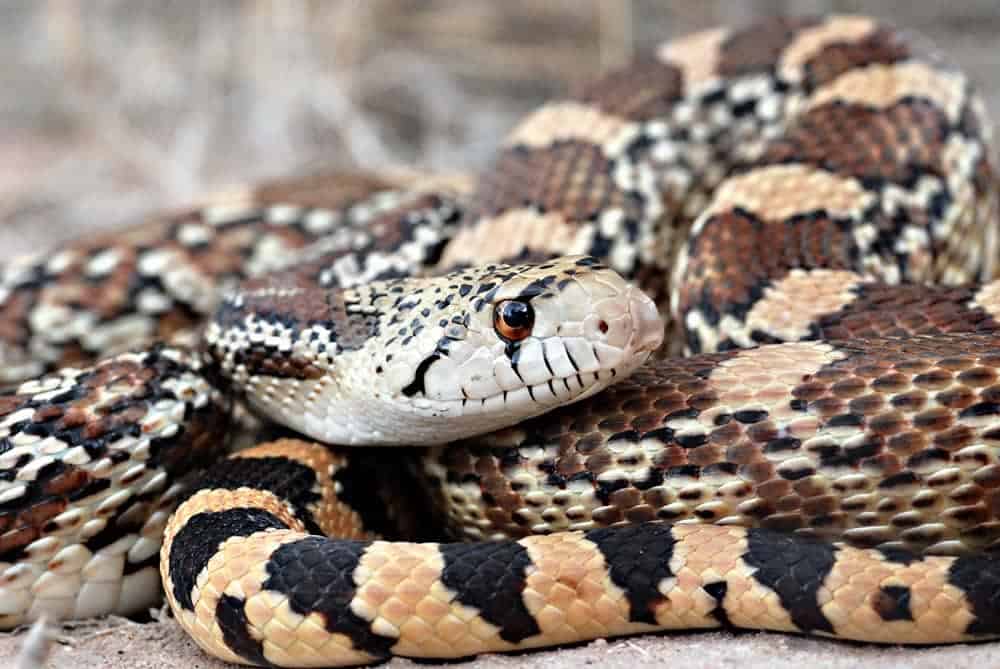
| Species: | Pituophis catenifer |
| Longevity: | 12–15 years (up to 30 years in captivity) |
| Good to own as a pet?: | Yes |
| Legal to own?: | Yes |
| Adult size: | 4–5 feet |
| Diet: | Carnivorous |
Gopher Snakes are non-venomous and make great pet snakes for beginners. They can be intimidating due to their long, muscular bodies, but they are rarely aggressive and are harmless to humans. They are yellowish-tan in color with darker brown, sometimes red, markings running down the length of their bodies and light yellow bellies. They favor a diet of small rodents, which is how they got their name, but they are known to feed on eggs and small birds too.
9. North American Racer
| Species: | Coluber constrictor |
| Longevity: | 8–10 years |
| Good to own as a pet?: | No |
| Legal to own?: | Yes |
| Adult size: | 20–65 inches |
| Diet: | Carnivorous |
North American Racers are slender, docile, yet incredibly fast snakes that do not enjoy handling, making them less than ideal to keep as pets. They are black or blueish black in color, with a pale grey belly and a small head. Despite this somewhat imposing appearance, startling speed, and defensive nature when threatened, these snakes are non-venomous and harmless to humans. They are most active during the day while hunting down their favorite prey of small rodents and lizards and even birds and their eggs occasionally.
10. Smooth Green Snake
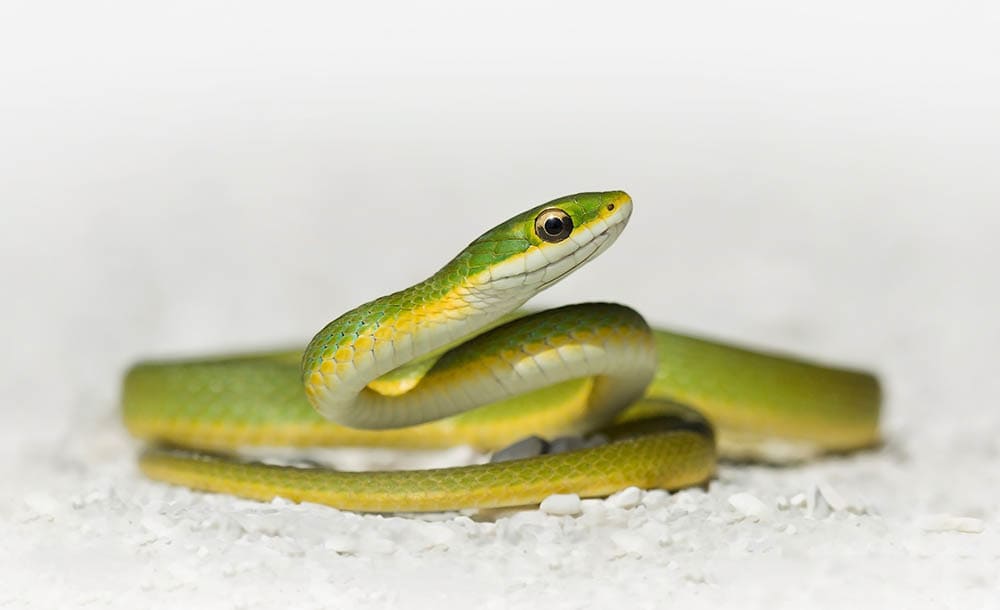
| Species: | Opheodrys vernalis |
| Longevity: | 4–6 years |
| Good to own as a pet?: | No |
| Legal to own?: | Yes |
| Adult size: | 14–20 inches |
| Diet: | Carnivorous |
Smooth Green Snakes are small and easy to care for because they have a diet primarily consisting of small insects, spiders, and worms and do not need to be fed mice. That said, they are timid, do not enjoy being handled, and prefer quiet habitats, so they do not make great pets overall, even though they are frequently kept as such. They are typically bright, vivid green in color, with a pale green belly and small beady eyes. They love moist, grassy areas, such as meadows and marshes, but can be found in forests too.

Conclusion
There is only one snake species to be concerned about in Montana: the Prairie Rattlesnake. Luckily, all the other snakes native to Montana are harmless to humans, and most are commonly kept as pets. If you do decide to keep one of these snakes as a pet, make sure to always purchase one from a breeder and avoid wild-caught specimens.
- Next on your reading list: 25 Snakes Found in Colorado
Featured Image Credit: Nathan A Shepard, Shutterstock
